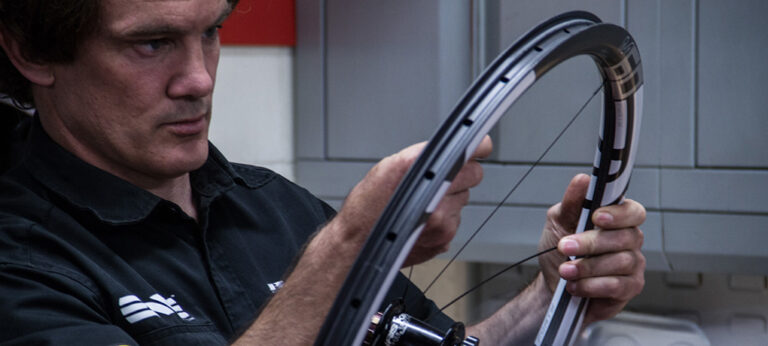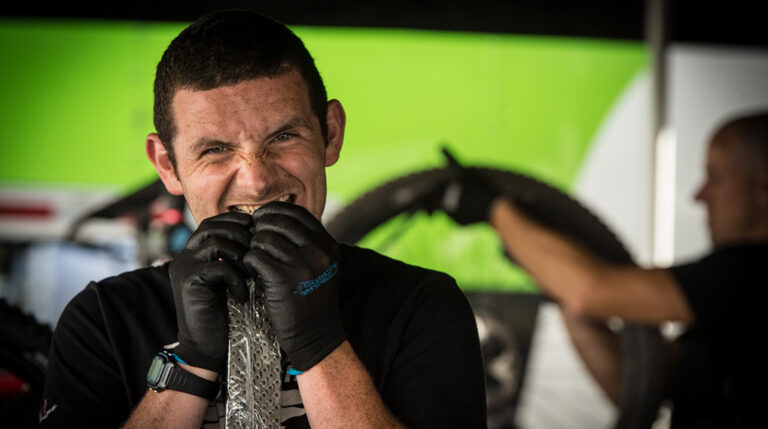I’m struggling to stay positive here so let’s think of the good things. The century has had one or two big happenings. Whilst much of the time the focus has been on the struggle to save weight and increase the baggage of adjustability, then Fox hit us with the most ground breaking fork of the century so far, the 36. Launched around the same time as the old Enduro it enabled six inches of rear travel to be taken seriously as a bike that could be ridden hard for more than three minutes. Its climb to 160mm has made a place for the 140mm 32 series. Great forks but I can’t help think that the new 36 are more suited to really aggressive bikes.
The reality is that people are bolting them on all kinds of bikes simply because they can. I’m wondering if 160mm is now the wrong side of six inches for a lot of bikes? But hey, it’s a bloody free for all if the truth be told. Most companies have hardtails with at least 120mm forks fitted. The Orange Sub Zero hardtail even comes with 160mm Van 36’s!
SOME NICE IDEAS THEN
OK, so this idle chit chat ain’t getting you anywhere in the search for a fork. Well, to start with let’s get it clear that lockout is pretty much good for nothing off road. It’s no good for climbing technical trails, it’s shit at pumping flowing root-strewn singletrack and of course it has absolutely no place in downhill. Err…World Cup BoXXer (with lockout) excluded. You are basically PAYING for the privilege of riding your bike UPHILL on TARMAC. Crazy.
TWO STEP/RLC/ATA/RTWD/UTURN
Everyone knows though that it is difficult to ride a chopper uphill, 130mm is climbable in full action, so on such forks it’s not really needed. We’re not saying travel reduction is a bad thing though. The new Two–Step RockShox system and three stage Fox Talas in this respect are marvellous. Of course the disadvantage of staged wind down damping is that you are pretty much fixed in the geometry changes.
This isn’t a problem if you are only using the feature for climbing but the advantage of the wind down incremental adjustment on All Mountains from Marzocchi and U-turn from RockShox is that you are able to set up the front end of your bike custom tuned. The only downside is that it takes time and is more of a faff than the two and three step.
That’s about it really (I can almost hear the laughter), because this amount of travel is going to be largely non-competitive, such fine tuning as the high and low speed compression found on some forks can be seen either as a very specialist tool to save hundredths of a second or as something to talk about with your mates.
Of the other companies the Cannondale Lefty stands out as being a well engineered product with needle rollers and totally rebuildable with great damping. The Maverick, whilst not being mainstream and to everyone’s taste visually, nevertheless provides an extremely light fork with the visible safety of a triple under your nose.
If the sport of downhill is not Formula 1, then All Mountain certainly is not NASA either. Mission Control for goodness sake. And what most people will say is ‘what the does it matter if they are stiffer or have more gadgets if they still are as unreliable?’
USE
In the right hands there is no doubt that each of the forks listed can and will do a variety of pretty stupid things. Jared Graves would certainly not be launching forty foot double if he didn’t think his front wheel was suspended with anything other than something substantial. He will often use a Fox fork that some people see as a cross–country product.
It’s very difficult to label a specific use of each fork but I think Fox sum it up pretty effectively by saying that the 140mm 32 series is all about ‘All Mountain’ whereas the heavier wider 36 is more for downhill. You’ll be disappointed with the 32 only if your riding this kind of ground. Told you.
Some of the big questions come after six I think. For example where after six inch does ‘do it all’ become a specialist eight inch downhill? Many riders simply wouldn’t entertain a 36lb six–inch bike on an uphill when they’ve got a 38lb downhill bike sat in the shed. Heavy sixes and sevens bother me. A lot. Bikes such as the SX Trail and Commencal Supreme Mini DH are totally class bikes, yet…
It’s not quite a straightforward matter that a six-inch bike requires a six-inch fork. You have to remember that a 140mm fork is near to six as a 160mm fork is anyway. See…marketing again. And Peaty may well have crushed everyone on a Pike in Peru but for many riders to get the most out of such bikes as the Nomad requires the bigger fork such as the Fox 36 or Lyric. The bike and fork companies are pumping out bikes that people don’t really know how or where to use. There was nothing wrong with the Van 36 set at 150mm but now you need the Talas to get that. More than that, it is a rare bike that can do both a 140mm and 160mm fork justice.
Not everyone buys forks for performance however. There are many reasons. A sixteen stoner, sorry, a sixteen stone person might want the bigger fork for stability in the same way a lighter rider might want the skinnier fork for weight loss. Whatever, a Landy with fourteen front and rear ain’t gonna be a match for Makkinen, whatever forest district you are in. Is it really that simple with a bike? Yes it is. We still need that sub 30lb five–and–a–bit inch travel bike.
WEIGHT MATTERS
Taking into account the relatively small difference in travel, the Lyric’s compared to the Floats are almost a tin of rice pudding per leg heavier. Now whilst you can say that on ground rougher than standard forest trails you will get progressively more control over your bike as the size of the fork increases, that does not mean that skinnier and less travel forks mean less control. It simply depends on where you go. RS, Fox, Manitou, all produce a light good performance140mm fork.
PERFORMANCE
Which forks are the best then? If bolted to a balanced bike, well they’re all pretty good and looking down the list it’s pretty hard to find a bad performing fork amongst those listed. Apart from the obvious that the bigger forks are generally better at descending and those with less travel sometimes more suited to bikes with similar amount, and lighter and less expensive, there’s not a huge amount in it. In terms of what’s inside it’s not essential that it must be mind bendingly complex, after all Fox have just put on line service guides for their products.
The whole RockShox range is thoughtfully put together and definitely better assembled than in years gone by. The star performers in the range being the Revelation U–Turn, a bargain at £280, and the 2 Step Lyric, incorporating useable alternative to travel and brilliantly effective at descending.
Fox. The Float 32 was a star last year and so it follows this season. It is simple and requires no stepping down, stopping up or any such fiddle. It can be ridden hard up to a pretty serious standard. For anything else a couple more tins of custard and (gulp) two hundred and forty sheets of the queens best will have you considering body armour in your suitcase on your next trip into the hills…the Van 36 for definite. Remember that RockShox responded like lightning with the Lyric to challenge the 36, with identical travel and with what some people say has better steering qualities to do with the fork trail, but really that’s a big call. The coil Vanilla RC2 is about the same weight and price. It’s a complex market.
The Marzocchi SL holds its ground very well. It’s almost as burly as the Lyric and weighs in almost the same. Incremental adjust enables bikes to get the ‘just right’ geometry. In other words the SL is a long travel trail fork that can be toned down to a lighter use fork yet is only a pound heavier than the super simple Float. It depends if weight is an issue, but this is a very versatile fork. Would I choose it over the U–Turn? Well it’s going to ridden hard so I’d probably look at warranty before deciding.
People have commented that the Marzocchi spikes. Well there is a variance in the performance of the same fork from the same company amongst most. However fitting a different compound tyre can sometimes eliminate such tiny tolerances. The SL has some unnecessary Terrain Selection bollocks going on, and the air pressure adjustments take a bit of working out, but generally I think this is a very good fork to ride.
Manitou can take on all of the other companies with the 140mm Minute – even an hour off Alp d’Huez failed to affect these great forks. I’d shade it over the Pike as a 20mm bolt through 140 for definite. It’s a shame the rest of the range doesn’t come up to scratch. In the right hands the 140mm travel forks from each company will do anything in terms of jumps with good transitions and most forest trails in this country. Definitely not as good as the bigger forks on the big stuff but when built to a 140mm bike their performance and reliability are at the top of their game.
WHERE DOES THAT LEAVE US?
Some way short of the magneto–rheological fluid dampers from Audi or Bnose’s Linear Electromagnetic in terms of technology. Magura and Pace have reliability and complexity issues that need resolving if they are to take on this lot. The RC 41 could be such a good fork if it was simplified because it has the lightweight and 20mm axle that could challenge the others.
So this feature leaves me thinking about the likes of Magura, Pace and White Bros given the huge choices that the big four provides. It also leaves you with choices. Price, warranty, parts availability, weight, travel, features, styling, company, service costs, self-service.
The conclusions are written. Van 36 and Lyric 2 Step for bruising, and Float, Minute Super getting the 140mm nod. Anything under that up to 130mm, well the Revelation is simply that.
Long term test of the chosen forks and report back December.









